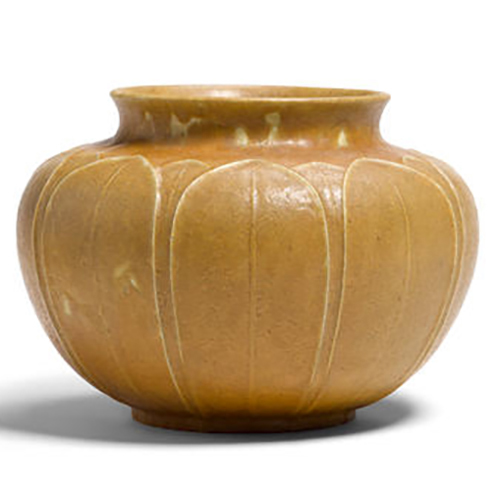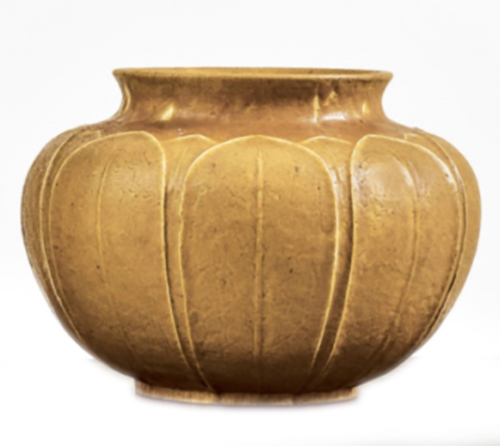What is the difference between Thing 1 and Thing 2? I honestly believe there is only one really big difference, but I will get to that shortly. First, let’s go over what I think are the similarities. Both were produced by the Grueby Faience Company, an American ceramics company founded in 1894, that produced pottery during the American Arts and Crafts period. As described in the auction catalogs, both vases are glazed earthenware created in the early 20th century (c. 1900), and they both measure 6 ¾ inches in height. Thing 1’s description clearly states that the vase has the firm’s name “Grueby Pottery Boston U.S.A” impressed on it, Thing 2’s description merely states ‘with the firm’s impressed mark.’ And although there is a slight variation to an incised marking that identifies the artist, Thing 1 is marked CH #y39-1, and Thing 2’s mark is stated as CH-139. Neither auction had photos of the bottom of the pieces, so I cannot tell where the discrepancy lies, but I would venture to say it is with the cataloging. And the last thing I noticed was that both pieces had a similar listing in the Provenance “Private Collection, Northern California” – coincidence? I think not!
I can only say from the evidence presented before you that both Thing 1 and Thing 2 are one and the same….but I could be wrong. I did call one of the auction houses to confirm my suspicion, but of course, they were not at liberty to say anything. So this is what I see as the big difference…$426,175!
When Thing 1 came up for auction in Los Angeles in April 2019, it sold for $5,075, seems unremarkable and I am sure no one really noticed the sale. Jump forward a little over a year to July 2020, and now the same or a REALLY similar Thing comes up for sale in New York, and this little inconspicuous vase becomes the focus of a bidding war. Estimated to make $7-9K this time around (reasonable based on the last sale), it sparked a 45-minute battle, and when the hammer came down it sold for an astonishing $345K ($431.2K w/p), an auction record for pottery from the Arts and Crafts period. If someone has an explanation for the price difference or can show me that they are indeed two different Things, I would love to hear it. Maybe it just proves once again how unreliable, and volatile the auction market is or, does it really show that location makes all the difference…like they always say…LOCATION, LOCATION, LOCATION!


